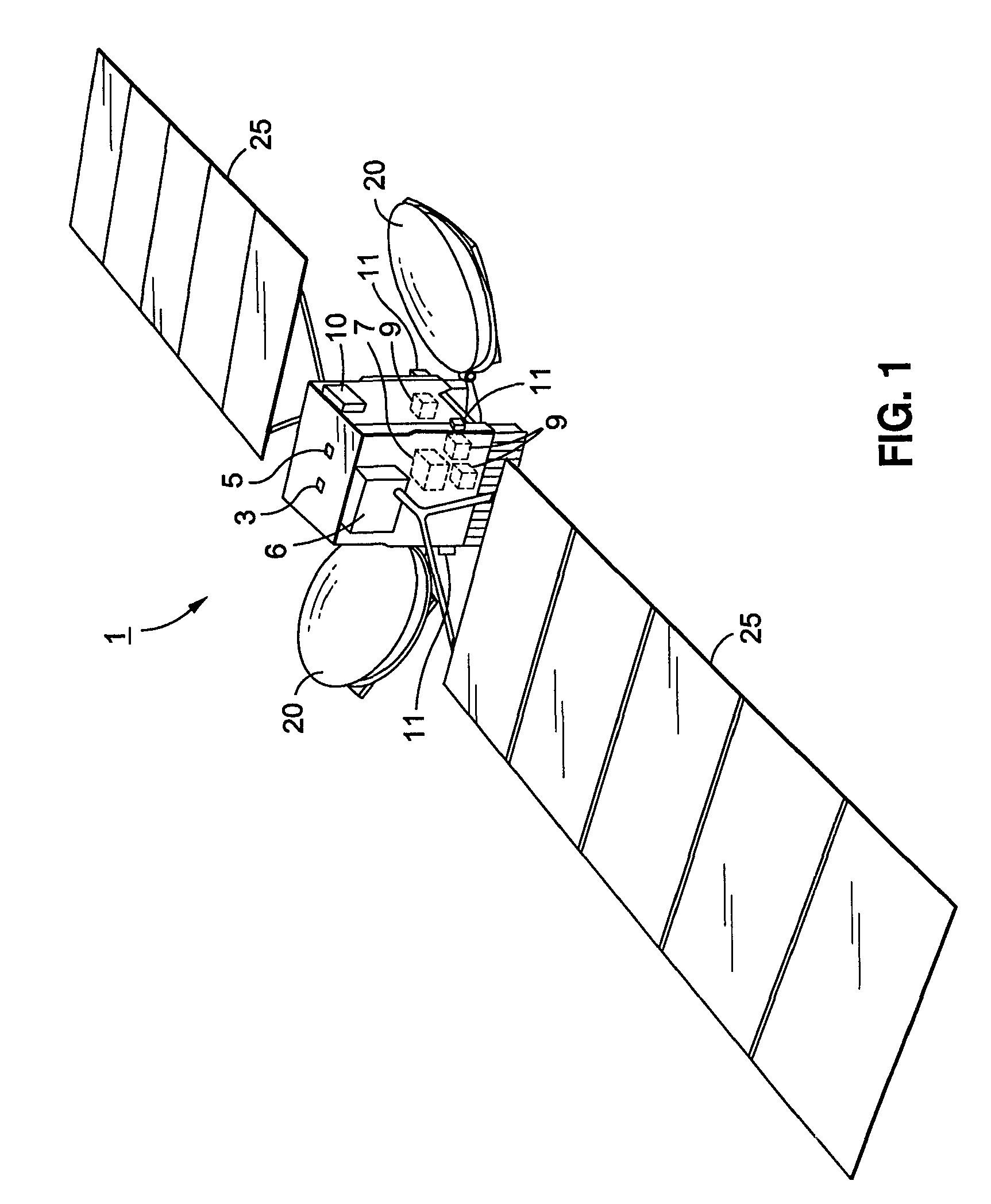Spacecraft magnetic momentum control system
a control system and magnetic momentum technology, applied in vehicle position/course/altitude control, process and machine control, instruments, etc., can solve the problems of wasting control authority and power, algorithm does not take into account the variation of magnetic field, and torque is applied to reduce the effect of both cyclic and cyclic effects, so as to reduce the duty cycle of torquers and reduce power consumption. , the effect of reducing the number of magnetic torquers
- Summary
- Abstract
- Description
- Claims
- Application Information
AI Technical Summary
Benefits of technology
Problems solved by technology
Method used
Image
Examples
Embodiment Construction
[0028]As mentioned above, the present invention solves the problems of the conventional magnetic momentum control method by providing a magnetic momentum control method and system that only respond to the secular momentum error component, while ignoring the cyclic momentum components. The method and system of the present invention also takes into account the variation of the Earth's magnetic field over the entire orbit, and applies magnetic momentum control torques where it is most efficient to do so. The present invention thereby results in a dramatic decrease in the magnetic torquer duty cycles and corresponding power savings. For example, for a reference MEO mission in a 55 deg inclination orbit, the torquer duty cycles according to the present invention are reduced by up to 84% compared to a conventional MMC system.
[0029]FIG. 1 is an exemplary spacecraft in which the invention may be practiced. As seen in FIG. 1, spacecraft 1 is shown in which the invention may be implemented. I...
PUM
 Login to View More
Login to View More Abstract
Description
Claims
Application Information
 Login to View More
Login to View More - R&D
- Intellectual Property
- Life Sciences
- Materials
- Tech Scout
- Unparalleled Data Quality
- Higher Quality Content
- 60% Fewer Hallucinations
Browse by: Latest US Patents, China's latest patents, Technical Efficacy Thesaurus, Application Domain, Technology Topic, Popular Technical Reports.
© 2025 PatSnap. All rights reserved.Legal|Privacy policy|Modern Slavery Act Transparency Statement|Sitemap|About US| Contact US: help@patsnap.com



